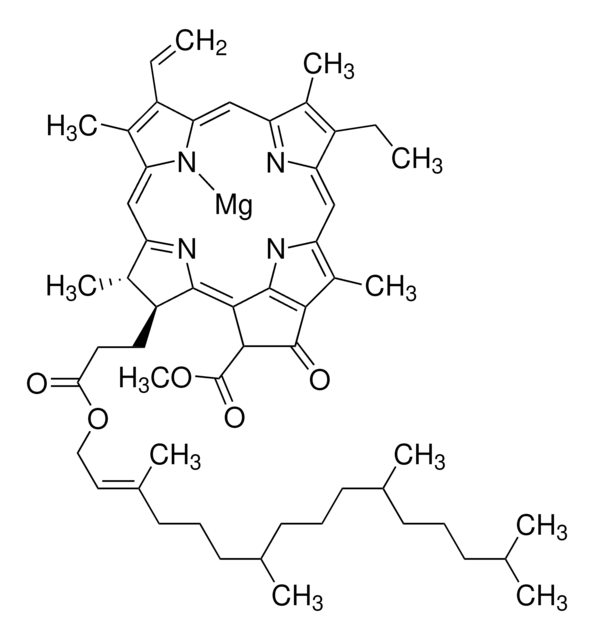Key Documents
52444
Violaxanthin
≥90.0% (HPLC), solid
Synonim(y):
(3S,3′S,5R,5′R,6S,6′S)-5,6:5′,6′-Diepoxy-5,5′,6,6′-tetrahydro-β,β-carotene-3,3′-diol
About This Item
Polecane produkty
product name
Violaxanthin, ≥90.0% (HPLC)
Poziom jakości
Próba
≥90.0% (HPLC)
Postać
solid
λ
in ethanol
absorpcja UV
λ: 438-442 nm Amax
temp. przechowywania
−20°C
ciąg SMILES
CC(/C=C/[C@@]12[C@](C)(O2)C[C@@H](O)CC1(C)C)=C\C=C\C(C)=C\C=C\C=C(C)\C=C\C=C(\C=C\[C@]34C(C)(C)C[C@H](O)C[C@]3(O4)C)C
InChI
1S/C40H56O4/c1-29(17-13-19-31(3)21-23-39-35(5,6)25-33(41)27-37(39,9)43-39)15-11-12-16-30(2)18-14-20-32(4)22-24-40-36(7,8)26-34(42)28-38(40,10)44-40/h11-24,33-34,41-42H,25-28H2,1-10H3/b12-11+,17-13+,18-14+,23-21+,24-22+,29-15+,30-16+,31-19+,32-20+/t33-,34-,37+,38+,39-,40-/m0/s1
Klucz InChI
SZCBXWMUOPQSOX-WVJDLNGLSA-N
Szukasz podobnych produktów? Odwiedź Przewodnik dotyczący porównywania produktów
Opis ogólny
Zastosowanie
Działania biochem./fizjol.
Kod klasy składowania
11 - Combustible Solids
Klasa zagrożenia wodnego (WGK)
WGK 3
Temperatura zapłonu (°F)
Not applicable
Temperatura zapłonu (°C)
Not applicable
Certyfikaty analizy (CoA)
Poszukaj Certyfikaty analizy (CoA), wpisując numer partii/serii produktów. Numery serii i partii można znaleźć na etykiecie produktu po słowach „seria” lub „partia”.
Masz już ten produkt?
Dokumenty związane z niedawno zakupionymi produktami zostały zamieszczone w Bibliotece dokumentów.
Klienci oglądali również te produkty
Nasz zespół naukowców ma doświadczenie we wszystkich obszarach badań, w tym w naukach przyrodniczych, materiałoznawstwie, syntezie chemicznej, chromatografii, analityce i wielu innych dziedzinach.
Skontaktuj się z zespołem ds. pomocy technicznej








